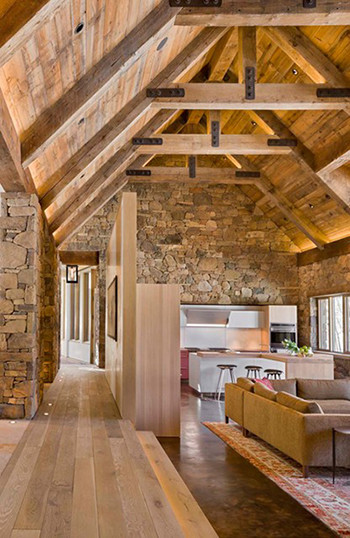 It’s not only the wood that makes people fall in love with timber frames — it’s their natural sustainability.
It’s not only the wood that makes people fall in love with timber frames — it’s their natural sustainability.
Energy efficiency has long been touted as one of the main benefits of building a timber frame home, and in a world where green standards can be a bit fuzzy, these homes truly embody what it means to be a leader when it comes to creating a comfortable and cost-effective home that’s mindful of the environment.
But what about sustainability? How do timber homes measure up in the larger arena of green building?
It’s not just a finished timber home that scores high on the energy-saving chart, the fabrication and construction process does, as well. To truly build “green” is to create a structure that’s environmentally responsible and resource-efficient throughout a building’s life cycle, from siting to design, construction, operation, maintenance, renovation — even demolition. How sustainable your home is will be up to you, but the fact that timber home construction intrigues you is a good place to start.
The long and the short of it is this – wood grows naturally and it is the only major building material that’s renewable and sustainable over the long term.
Because most of that wood will be located inside the home, long-term maintenance requirements for a timber home should be low, and opting for reclaimed or recycled materials is another way to boost your home’s green appeal. Because of their easy installation, structural insulated panels (SIPs) combined with a timber frame, require less energy and produce less material waste during your build.
Perhaps the biggest factor contributing to a timber frame’s sustainability, though, is its long-lasting qualities. History has shown that, with proper design and maintenance, wood structures can deliver centuries of reliable service; plus, we now have additional precautions against insect and fungal damage. And although modern machinery helps to cut and form the beams and pegs needed to frame today’s timber homes, most companies still use the same techniques that were used in the historical timber frames that are still standing today, showing that this building method is proven to stand the test of time. It doesn’t get more sustainable than that.
